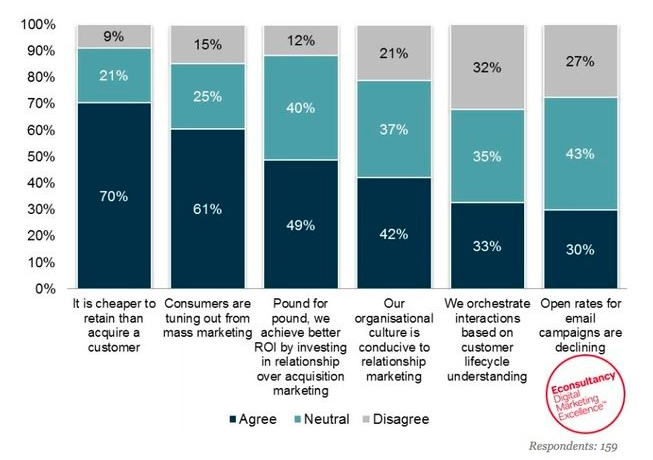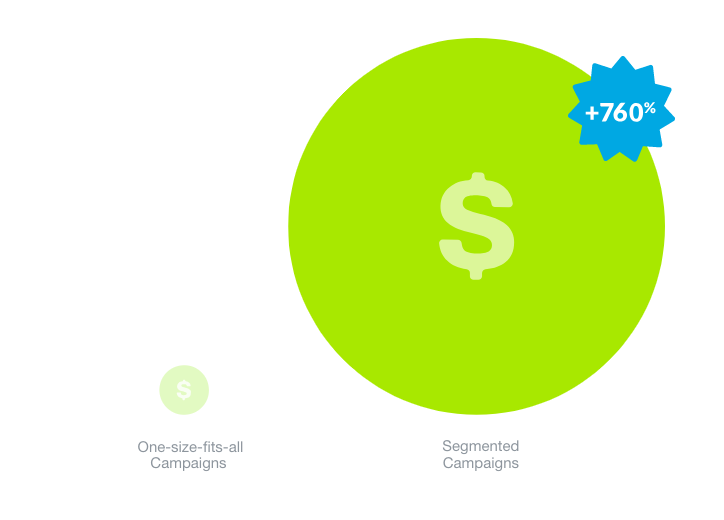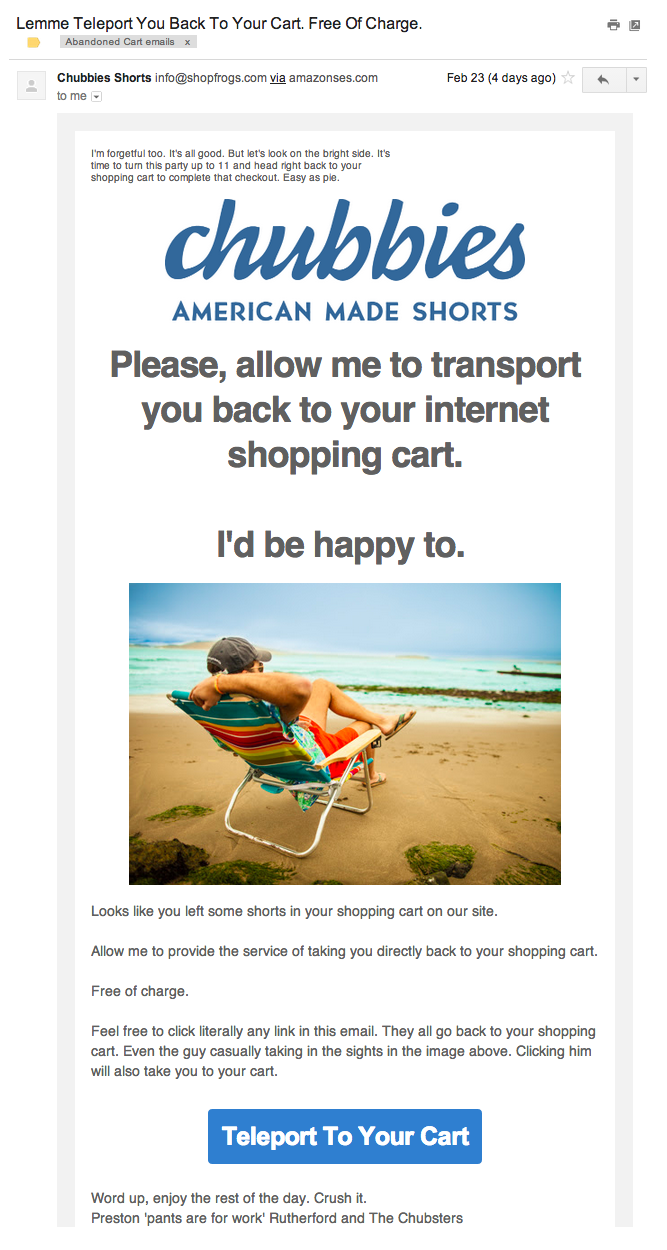Want to lower your marketing costs?
Look no further than email advertising.
In this article, Ignite’s Head of Email Marketing Dustin Baly explains the different ways email marketing can effectively lower your overall marketing costs.
We know that email is one of the most effective marketing channels.
We also know that people spend tons of time with their inboxes.
According to Google, Gmail now has more than 1 billion monthly active users, and they typically spend more than 6 hours in their inboxes every day.
For reference, the average daily Facebook user only spends 41 minutes a day on the platform.
Marketers aren’t strangers to this concept; after all, 87% of companies do email marketing (what the other 13% are thinking? Your guess is as good as mine.)
But here’s what many of those companies don’t realize: email advertising and marketing can actually lower overall marketing costs.
Now before we really get started, let’s clear up any confusion regarding email advertising and email marketing.
Email advertising is simply advertising through email.
It’s (usually) not advertising in its most obvious form; rather, it’s a way of promoting your business through email. Otherwise known as email marketing.
Except in the scenario I’m about to go over, the two are generally interchangeable.
And both will lower your marketing costs.
Here’s how.
Email Advertising: Running Ads Through Gmail
This is as on-the-nose as email advertising gets.
That’s because it’s an actual, straight-up advertisement you send through email. And while we still consider it a part of email marketing, it really is an ad disguised as a regular member of your everyday inbox.
What’s really cool about Gmail ads is that they look like any other, organic email.
They appear at the top of your Promotions tab in personal Gmail accounts. They used to have yellow backgrounds and display company logos, but have recently been tweaked to look more natural.

Email advertising through Gmail
So a user will see what looks like a regular email – save for the small ‘Ad’ box in the subject line.
When clicked on, they’ll see an expanded version of your ad, which the advertiser can customize in Google AdWords. These can include photos, videos, phone numbers, and links.

Expanded email advertisement in Gmail
And the advertiser only pays when someone initially clicks to expand their ad.
Now here’s why these are so different than your traditional email marketing: they don’t run based on your own email lists.
Gmail ads are run through Google AdWords, which means your ad has the potential to reach the entire Google user universe, right through their messaging channel of choice – email.
Because they’re run through AdWords, the setup and targeting will be very similar to what you’re used to (assuming you’ve run ads through Google before).
So rather than target people based on email engagement or website actions, you’ll be targeting based on demographics, interests, and topics.
You can also use some advanced audience features here like AdWords Customer Match, which allows advertisers to build custom audiences based on a list of users email addresses.
Fun fact: a Wordstream study found that Customer Match audiences were more effective than both Facebook Custom Audiences and Twitter Tailored Audiences.

Email advertisement custom audiences
Now, you may be wondering how all this contributes to lower marketing costs.
The average cost per click (CPC) or an ad on the search network is between $1 and $2.
With Gmail ads, it’s possible to get CPCs as low as $.10.
So how do you get those costs down so low? By increasing your number of clicks.
The great thing about Gmail ads is that they tend to get a crazy amount of impressions – remember, people spend tons of time in their inbox. In fact, a message is 5x more likely to be seen in email than a Facebook ad.
And of course, you only pay when someone clicks your ad.
The higher your click-through rate, the lower your cpc will be.
And the best ways to keep your CTR high? Target wisely and write killer, super-clickable subject lines. So, make sure you’re:
- Using specific, targeted keywords
- Experimenting with Customer Match and other Custom Audiences
- Following the rules of good subject line writing
- Testing each component – subject lines, keywords, creative, etc.
Email Advertising: Running Ads Based on Email Addresses
Here’s another cool email advertising trick: run ads elsewhere using your existing email list.
It’s such a great option because it helps take a lot of the guesswork out of traditional ad targeting.
Rather than building an audience based on who you think will engage with your brand, you can build based on those who have a proven interest in your product or service and a history of engagement.
You can do this in AdWords using the Customer Match audience we talked about above. Outside of Gmail Ads, you can use that audience to target Search and Display ads to people already on your list.
Another great platform for email advertising targeting is Facebook.
As we saw above, Facebook is second only to Gmail Ads when it comes to email match rate.
And the numbers (courtesy of TechCrunch) are something you’ll want to take note of.
- An ecommerce company who targeted their list found a 43% conversion rate increase among sign ups and a 30% decrease in cost-per-lead.
- OpenSky targeted members who had either never purchased or note purchased within 30 days, and saw a 30% conversion rate increase.
- SocialCode found that their custom audience campaign yielded 15% lower cost per Facebook likes.
- A similar company received 3x as many engagements per post as standard ads, and received two times as many engagements
One of the secrets to basing your ads on your emails?
Having a well-segmented list.
An email list that’s separated into clear segments will help you target the right users at the right stages of the buying cycle.
For example, you wouldn’t want to advertise a specific product to your clients that have already bought it; instead, you would want to advertise to the section of your list that hasn’t yet purchased.
But say you were advertising your new customer loyalty program. You would absolutely want to put that in front of your audience of existing customers.
Because you can target your list down to specific actions like past purchases or qualified leads, you’re filtering out a lot of impressions and clicks that could otherwise come from less certain targeting.
Which means that ultimately, you’re saving marketing dollars by advertising to the right people.
How Email Advertising Lowers Marketing Costs
All on its own, email is one of the most cost-effective ways of marketing your business.
In fact, for every $1 spent, the average return on email marketing investment is $44.25.
And we’ve got more stats to back that up:
- When it comes to purchases made as a result of receiving a marketing message, email has the highest conversion rate (66%), when compared to social, direct mail and more
- Email marketing drives more conversions than any other marketing channel, including search and social.
And when you look at email compared to direct mail – which comes with the added costs of printing and delivering – the winner’s clear. Email’s ROI comes in 28.5%, compared to direct mail’s 7%.
So why is email so effective?
-
Without Email Advertising, It Takes More Marketing Dollars to Get a Sale
Email enables you to get more interested prospects and sales for less marketing dollars by developing site visits into meaningful and lasting email connections.
Think about it: with a proper email form and lead magnet in place, you’re collecting the emails of a lot of prospects that visit your site. A lot of these visits are likely organic, meaning they didn’t come from any kind of paid placement.
By capturing their email, you have a way to keep in contact and nurture that lead – without any of the costs associated with traditional advertising.
Once you have that email, you can push prospects through the sales cycle by sending targeted, personalized emails.
-
Email Advertising Lifts Customer Lifetime Value
Retaining a customer is a whole lot cheaper than attracting a new one.
In fact, according to a study by eConsultancy, 70% of companies say it’s cheaper to retain a customer than acquire one and 49% say that, pound for pound, they achieve better ROI by investing in relationship marketing over acquisition marketing.

Email Advertising helps retain existing customers
But in this article from Forbes, author Larry Myler explains that 60-80% of satisfied customers don’t do business more than once with the company that satisfied, and a lot of that is due to the loss of connection.
So how do we re-establish that connection and keep those satisfied customers?
Through email.
Email is an ideal avenue to keep in touch with those you’ve done business with before. Continue to send them relevant articles and information, or even a simple email to check in if you noticed it’s been a while since you’ve done business with them.

Email advertising helps target customers bases on engagement and past purchases
You can also use segmented campaigns to target your audience based on their past purchases by sending them personalized product recommendations.
-
Personalized Email Advertising Drives Higher Conversion Rates
Want to see the highest returns on your email advertising?
Personalize it.
Customers are 80% more likely to do business with a company if it offers a personalized experience, and marketers have noted a 760% increase in revenue from segmented campaigns.

Targeted email advertising
That doesn’t just mean adding in the recipient’s name or sending a birthday message.
It means personalizing the entire experience based on their previous engagement or past behavior.
For example, you can send transactional emails based on behavior like purchase confirmations or shipping notifications, and they typically see open rates 8x higher than traditional emails.
For more on how and what to personalize, read my full article here.
-
Reclaim Lost Sales With Abandoned Cart Email Advertising
Here’s a harsh reality: 75.6% people put items in their online shopping cart only to leave it without completing their purchase.
With traditional marketing, if you wanted to reach those people again you would have to rely on remarketing. It’s highly effective, but it does come with all the traditional ad costs.
An abandoned cart email, on the other hand, can be crafted to trigger when that customer leaves the purchase cycle.
These emails are also highly effective, with SalesCycle reporting that abandoned cart emails average a 46.1% open rate, a 13.3% click rate, and $5.64 per email in extra revenue.

Abandoned Cart emails are some of the most effective ways of email advertising
In that way, you’re essentially readvertising your product and getting back a lot of the revenue you may otherwise have lost, without spending a lot of extra advertising dollars to do so.
Like most automated emails, they can be set up in your email software of choice (MailChimp, Constant Contact, etc.) to deploy automatically.
Remember, a good abandoned cart email should:
- Have a compelling subject line
- A reminder of what they’ve abandoned
- A clear CTA
- And maybe a discount or free shipping offer to sweeten the deal
-
Mature Mixes of Marketing Channels Acquire Over 25% of Their Revenue From Email Advertising
Of course, email marketing is just one piece in the bigger marketing puzzle.
But to be fair, it’s a pretty important piece.
And when used effectively, email alone can contribute over 25% of revenue. On top of that, it does so at a lower cost per sale compared to other marketing channels.
It does so for all the reasons we’ve discussed above, including its ability to nurture leads and deliver high lifetime value.
Concluding Email Advertising
Email’s been going strong for so long for a reason.
It continuously proves to be one of the most cost-effective ways to reach and retain customers, and contributes largely to most businesses bottom line.
So if you’re thinking of ways to cut your marketing costs, start thinking more about how you can use email marketing.
